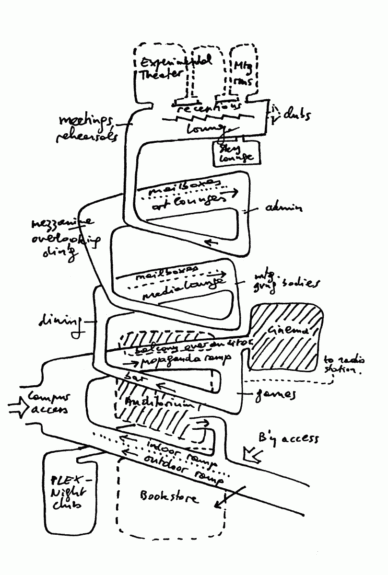What is our big old university hiding?
Columbia often leaves students full of unanswered questions. Sometimes, I try to theorize the history of seemingly out-of-place buildings as I make my way to my next class with three minutes left before I am officially late. Other times, I sit in a lounge or library and wonder if a Columbia system has problematic origins (as the result of being, you know, a 267-year-old institution with many sins). In both cases, I have been left with a litany of questions to Google or investigate alone during my valuable study time. Why do I investigate or Google alone? Sometimes the questions are so trivial that I have been too afraid to ask, but as a result, I have gained so much valuable insight. With this golden goblet of knowledge, I figured that I am now qualified to answer the top three questions you have about Columbia or its campus but have been too afraid to ask.
What is the Butler wind?
Everyone who has been to Butler library has experienced a mysterious gust of wind that billows out of the front doors, dramatically blowing hair in the wind. Many of you have been confused about the source of this ethereal gust, but the answer isn’t so exciting. The breeze, as explained in this past Bwog article, comes from two air conditioning units on either side of the doors. Of course, don’t let this stop you from feeling like a model as you walk into Butler to study for a midterm or two, but for no real reason, I felt like you should know the source of the wind.
What is that little red house near Philosophy Hall?
Among the stone fixtures and bright green grass that compose Columbia’s main campus, there sits a small red brick building that no one seems to know the purpose for. Even my NSOP tour guide didn’t know the purpose of this ‘little house,’ but don’t fret because, once again, I did my own research. The building is formally named Buell Hall, and it actually has a rather surprising history. Buell Hall is the only remnant of the Bloomingdale Insane Asylum, a private hospital for mentally ill patients that existed from 1821 to 1889 on the current Columbia campus. It was the last structure built for the asylum in 1886. Today, it serves as home to the Graduate School of Architecture, Planning, and Preservation and the French and Romance Philology Departments. Unfortunately, I don’t have an answer for the strange things you may see in the windows of Buell Hall, but the aforementioned departments may have the answers you need.
Why is Lerner built like that?
Lerner’s famous ramps—which look cool but are awful for studying—are the main feature of the building, sometimes called the “main office” of campus by tour guides. Initially, I couldn’t theorize the answer to this one because I never thought about it before receiving this question, so I went into the history of Lerner Hall to find out. Lerner Hall was built in 1999, making it a fairly new Columbia building. Columbia’s website page about Lerner Hall states that the goal for creating Lerner was to make a “space that would facilitate informal interactions while also serving as the anchor for campus activities of all types.” According to Bernard Tschumi, the lead architect who built Lerner Hall, “It was the system of ramps and the point-fixing of the very light glass structure. We wanted to bring the maximum amount of light into the building itself. But again, movement is what defines space.” Lerner’s ramp design was meant to maximize space for student interaction and later won the American Architecture Award. So next time you’re in a long Ferris line, knowing that you are waiting for your pasta in an award-winning building may ease the hellish condition of waiting in a Columbia dining hall.

Overall, these questions could have gone unanswered, and it wouldn’t have changed the trajectory of your day, but nevertheless, I hope you feel empowered by knowing some histories of Columbia buildings and the answer to a mystery.
Buell Hall via Wikimedia Commons
Sketch of Lerner Hall ramps via Bernard Tschumi Architects


 1 Comments
1 Comments
1 Comment
@Good buildings and bad buildings. Buell Hall is indeed a remnant of the previous occupant of the campus area, but it wasn’t built where it now stands–when Columbia moved uptown and took over what is now the central campus, in the 1890s, the building was moved some hundreds of yards to its current location; you could look it up. Also, a hundred years ago it was a center of student activities, and later it functioned as the Maison Française; you could look that up too. It’s a nice-looking little building. Lerner, on the other hand, may have won an award (who paid off the award committee?) but is a truly ugly and anti-functional piece of crap; you could probably look that up too.